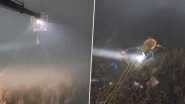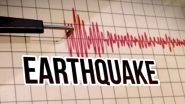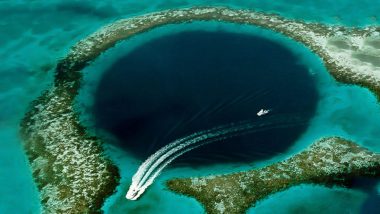There are so many things we are yet to explore. Lives can be more beyond what we know so far. Ocean swallowing places are as ancient as the myth of Atlantis. But again, there is an element of truth in science, which is not easy to explain. The ocean does open up and consume areas of sea, but what is inside them is largely a mystery. There can be lives or nothing at all, or something that we never know can exist. Scientists are now flocking to Florida’s Gulf Coast after a mysterious 425-feet-deep ‘blue hole,’ on the ocean floor was reported. The glowing mystery hole is said to be similar to the sinkholes, and what is inside it is largely a mystery. To find out answers, scientists are now exploring the site, dubbed the ‘Green Banana.’ Ultra-Black Fish Discovered by Scientists in Depths of Ocean, Pictures Show How the Deep-Sea Creatures Camouflage With Darkness and Swim at Ease.
A blue hole is a large marine cavern or sinkhole, which is open to the surface in a bank or island. They extend below sea level for most of their depth and may provide access to submerged cave passages. What is inside them is significantly a mystery. In general, the holes appear to host diverge biological communities full of marine life, like sea turtles, sharks, corals and sponges. But there could be more than that. Scientists are unsure as to how many blue holes exist. So, when the National Oceanic and Atmospheric Administration (NOAA) was informed about this deep blue hole on the ocean floor in Florida’s Gulf coast, they were quick to visit the area, in the hope to find more answers to it.
The NOAA reported that as of now they discovered two dead but intact smalltooth sawfish and an endangered species, at the bottom of the hole. The remains of one of the animals were recovered to examine. The scientists plan to embark on a new year-long mission in August to explore the 425-feet deep blue hole in Green Banana. The team of researchers will be included from Mote Marine Laboratory, Florida Atlantic University, Georgia Institute of Technology and the U.S. Geological Society, added NOAA.
The researchers are expected to study the seawater chemistry in the holes for their unique qualities and appearances. “Little is known about blue holes due to their lack of accessibility and unknown distribution and abundance. The opening of a blue hole can be several hundred feet underwater, and for many holes, the opening is too small for an automated submersible,” explained NOAA. Through its mission, they are hoping to learn if the holes are connected to Florida’s groundwater or if there is groundwater intrusion into the Gulf of Mexico.
Exploring blue holes, in general, requires an extremely high level of expertise in the diving field. Only a few divers have attempted it in the past at several locations. As compared to various successful expeditions completed, many explorers have perished in their attempts to reach the bottom of a blue hole. The Red Sea Blue Hole, for instance, located in Egypt is nicknamed the ‘Divers’ Cemetery,’ because reportedly 40 divers have lost their lives there.
(The above story first appeared on LatestLY on Jul 23, 2020 02:07 PM IST. For more news and updates on politics, world, sports, entertainment and lifestyle, log on to our website latestly.com).













 Quickly
Quickly


